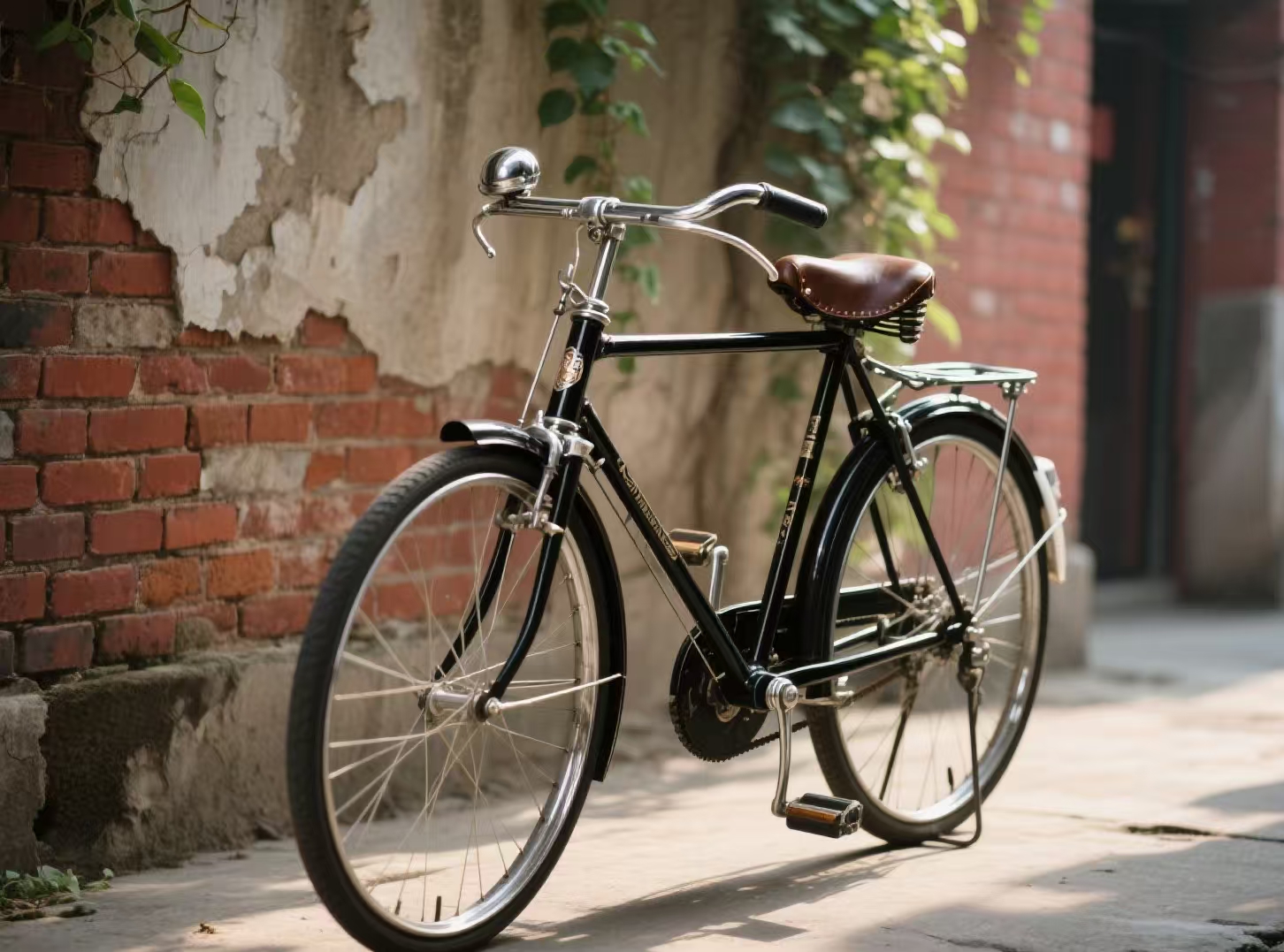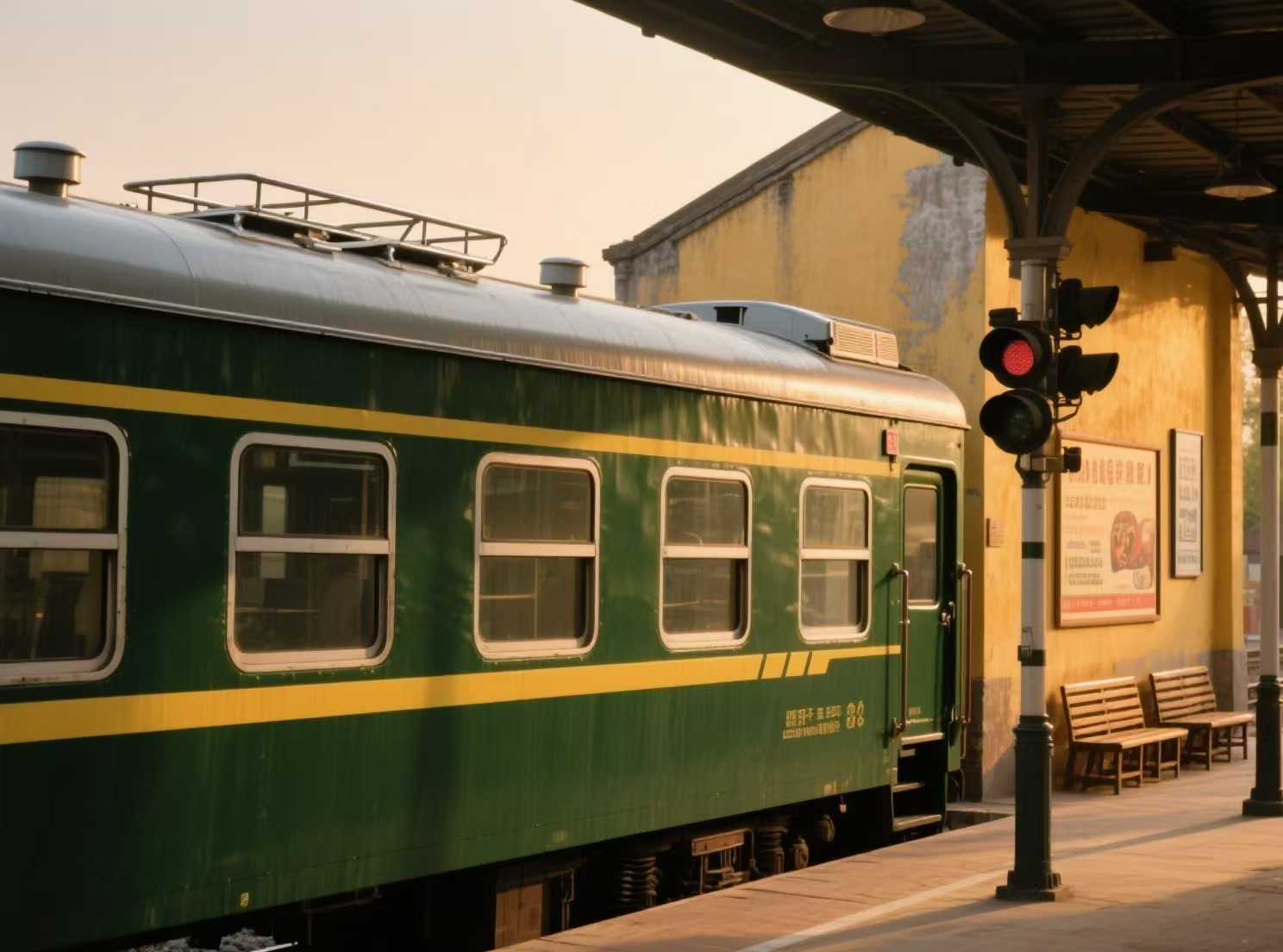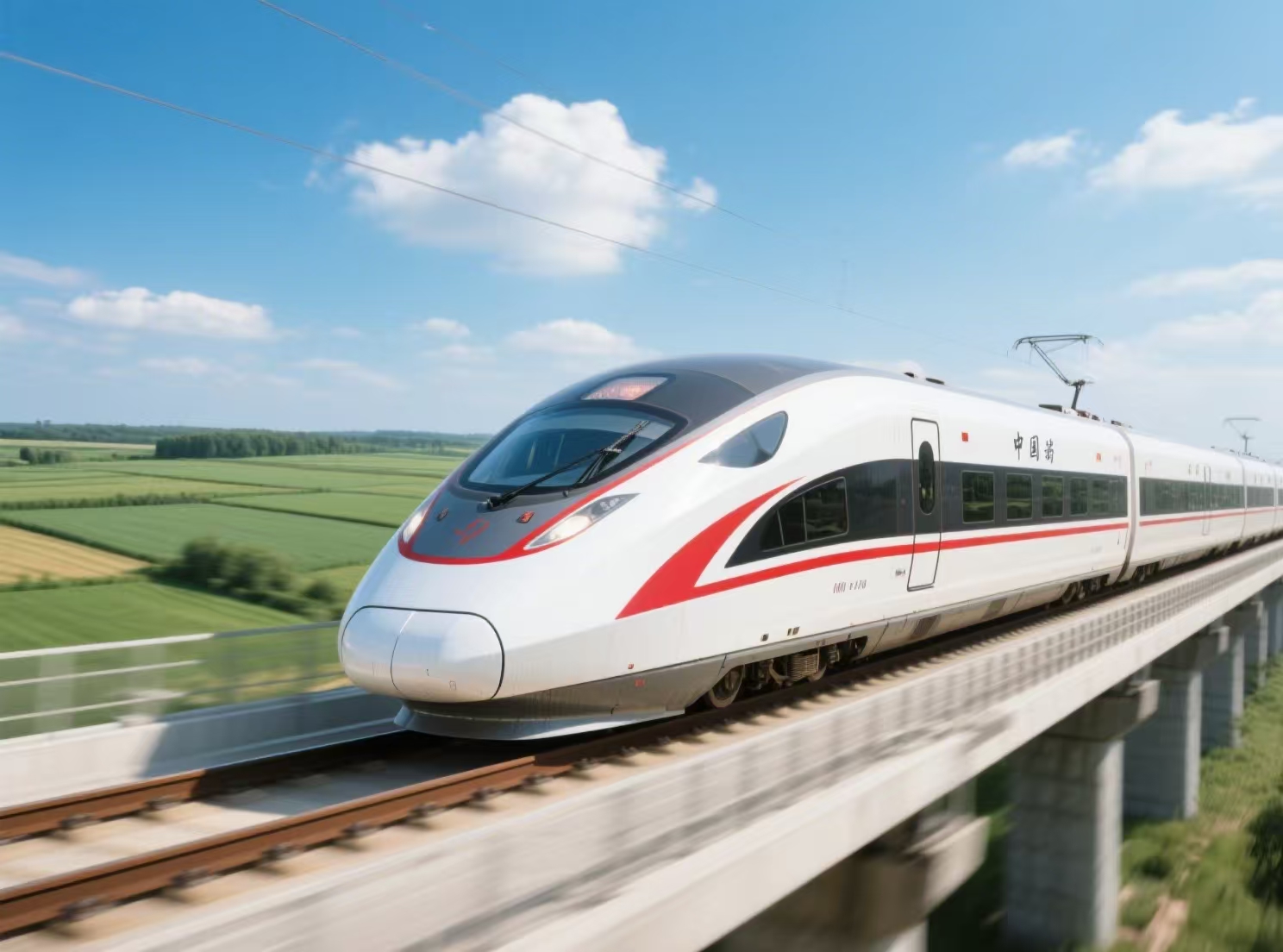Historical development
In the mid 20th century, China’s streets pulsed with the rhythm of bicycle wheels. The iconic Flying Pigeon bicycle symbolized an era of simplicity, where steam trains chugged between cities at a modest 50 km/h, and crowded buses defined urban mobility. For decades, this landscape remained unchanged—a testament to constrained resources and isolation.
The 1980s economic reforms ignited transformation. As foreign automakers like Volkswagen established joint ventures, China’s first generation of private cars began rolling off assembly lines. trains shed their steam engines for diesel and electric locomotives, pushing average speeds toward 100 km/h. Yet, it was the dawn of the 21st century that catapulted China into a new transportation epoch—the high-speed rail revolution.
China’s HSR saga began not with invention, but with visionary adaptation. In 2004, the nation launched an audacious strategy: acquire cutting edge technology from Japan’s Shinkansen, Germany’s Siemens, and France’s Alstom. Engineers then meticulously deconstructed, mastered, and reimagined these systems. By 2008, as the Beijing Olympics dazzled the world, the CRH "Harmony" trains debuted—streamlined marvels gliding at 250 km/h, heralding China’s arrival as a rail power.
What followed was a breathtaking display of scale and ingenuity. China didn’t just adopt high-speed rail; it redefined it. State backed research birthed the indigenously designed Fuxing ("Rejuvenation") trains in 2017, capable of 350 km/h—the world’s fastest commercial service. Engineers tunneled through mountains, bridged river valleys, and stitched together a 41,000kilometer network by 2023—over two thirds of the planet’s total HSR tracks. This steel web now connects 95% of major cities, with journeys like Beijing-Shanghai (1,300 km) trimmed to 4.5 hours.
The types of China high-speed train
Fuxinghao(CR) | Hexiehao(CRH) | |
Top Speed | 300-500 km/h | 300 km/h |
Appearance | Silver with red belt, or white with golden belt | 300 km/h |
Space | 405 cm high,wider legroom | 370 cm high, narrower legroom |
Electrical Socket | Standard and USB types beside the seats | Standard type under the seats |
Wifi | Available on all | Partially available |
Type in Service | CR400AF and CR400BF numbered by G or C | CRH2,CRH380B,CRH3C(numbered by G, D, C) |

(Flying Pigeon bicycle)

(China Green Train)

(Chian High Speed Train)
Booking Train Tickets in China
Traveling by train in China is an efficient and convenient way to explore the country, thanks to its extensive high-speed rail network. Whether you're planning a short trip between cities or a longer journey across provinces, booking your train tickets can be done easily online or offline. Here’s everything you need to know to secure your tickets smoothly.
Confirming your travel details first. Before booking, make sure you have the correct departure and arrival stations. Many Chinese cities have multiple train stations, so verifying the exact name in Chinese characters is crucial. For example, Beijing has several major stations, including Beijing West Station (北京西站) and Beijing South Station (北京南站). Checking the China Railway Map or using a reliable translation tool can help avoid confusion.
The most convenient option is to book online.For most travelers, booking online is the easiest method. The official platform for train tickets in China is the 12306 website and app, operated by China Railway. While the interface is primarily in Chinese, translation tools or third-party booking platforms can simplify the process.
To book through 12306, you’ll first need to register an account using your passport (foreign travelers are eligible). Once registered, you can search for trains by entering your departure and arrival stations, travel date, and preferred time. The system displays various options, including high-speed (G/D/C trains) and conventional (K/T/Z trains) services, along with available seat classes.
After selecting your train and seat, proceed to payment. The 12306 platform accepts WeChat Pay, Alipay, and Chinese bank cards. Some international credit cards may also work, though availability can vary. Once payment is confirmed, you’ll receive an e-ticket linked to your passport. At the station, simply present your passport for verification—no printed ticket is required.
If you prefer not to use 12306, several third-party platforms offer English-language support and additional convenience. Websites like Trip.com and China Highlights allow you to book train tickets without needing a Chinese payment method. These platforms often provide customer service in English, making them a good choice for international travelers.
For those who prefer offline booking, tickets can be purchased at train station counters or self-service kiosks. Major stations usually have English-speaking staff or bilingual machines, but carrying a written note of your destination in Chinese can be helpful. Keep in mind that during peak travel seasons, queues at ticket counters can be long, so arriving early is advisable.
China’s high-speed trains offer different seating categories to suit various budgets and comfort levels. And then let me introduce the three types of seat, business seat, first class seat and second class seat.
Business seat offers the most luxurious travel experience on China’s high-speed trains, comparable to airline business class. Designed for discerning travelers, it combines privacy, premium amenities, and personalized service.
| Feature | Business Class | First Class | Second Class |
| Seating Configuration | 2+1 (extra-wide leather seats) | 2+2 (wider seats) | 3+2 (ergonomic seats) |
| Seat Reline | 180° (near-flat bed) | Deep recline + footrests (newer trains) | Moderate recline |
| Legroom | Generous + privacy partitions | ~10 cm more than Second Class | Adequate (better than airline economy) |
| Amenities | Gourmet meals, amenity kits, WiFi, entertainment screens | Bottled water, snacks, power outlets | Power/USB ports (limited), fold-down tables |
| Services | Priority boarding, lounge access, attendants | Attended cabin, hot water refills | Snack carts, hot water dispensers |
| Environment | Quiet, private | Spacious, fewer passengers | Lively, social atmosphere |
| Ideal For | Business/luxury travel, long routes | Comfort-focused travelers, mid-long trips | Budget travelers, short-medium journeys |
| Fun Fact | Comparable to airline business class | Seats ~20% wider than Second Class | Moves 1+ billion passengers yearly |
Note: Amenities (e.g., WiFi, USB ports) may vary by train model (e.g., Fuxing Hao vs. older trains) and route.
(三种座位照片对比)
No matter what way you choose, you have to pay attention to the essential documents and items that can not be taken on board.
Essential Documents to Carry
1. Passport
Your ONLY valid ID as a foreigner (Chinese IDs/residence permits are not accepted for ticket checks).
Must match the name on your ticket exactly.
2. Printed Train Ticket
Foreign passports cannot scan at gates; you must print tickets at:
Station ticket counters
Self service machines(select "Passport" and enter passport number)
Tip : Book tickets via Trip.com, Ctrip, or at stations show booking confirmation + passport to collect physical ticket.
3. Valid Chinese Visa
Ensure your visa is active; random checks may occur.
Arrive at least 45-60mis early for tickets collection/security checks.
Strictly Forbidden:
Item | Details |
Explosives | Fireworks, flares, gunpowder |
Weapons | Guns,replicas,bullets,pepper,spray,knives(incl.Swiss army knives) |
Flammable Liquids | Gasoline,alcohol>70% concentration,paint thinner |
Gases | Aerosol sprays >120 ml (hairs pray,insect repellent),butane gas canisters |
Toxic Chemicals | Pesticides,mercury,radioactive materials |
Restricted(Quantity Limited):
Item | Allowance | Notes |
Alcohol | Must be factory-packaged | |
Batteries/Power Banks | Must be carried(not in luggage) | |
Nail Polish/Perfume | Total | |
Hair spray/Aerosols | Total | |
Sharp Object | Small scissor( | Must be securely wrapped |
Navigating China’s Train Stations
Entering any major train station in China, you'll immediately notice the organized efficiency of the system. The security check process is straightforward - simply place your bags on the X-ray scanner and walk through the metal detector, with staff available to guide you if needed. This quick procedure typically takes just moments to complete.
Once through security, you'll find yourself in the spacious main waiting area. Here, large electronic display boards provide all the essential information you'll need in both Chinese and English. These clearly show your specific waiting zone, boarding gate number, and real-time updates about your train's status and arrival time. Station staff wearing identifiable uniforms are always present to assist passengers with any questions.
Chinese train stations are designed with traveler convenience in mind. You'll find charging stations for your devices, clean restroom facilities, and various shops and food outlets. Regular announcements in Chinese and English help ensure you don't miss important information about your train.
What's most impressive is how these stations smoothly handle the enormous daily passenger numbers while maintaining clear organization. The systems in place and helpful staff make navigating Chinese train stations a surprisingly stress-free experience, even for first-time visitors. Whether you're a frequent traveler or new to China's rail system, you'll find the stations well-equipped to get you where you need to go efficiently.
➡
After ticket check, please verify the train number, carriage number, and seat number on your ticket. The electronic screens in the waiting hall will display your corresponding train number - take note of the colored marker indicated (e.g. "Purple Marker" or "Blue Marker").
Follow the directions on the electronic screens to your designated platform. Look for ground markers matching the color shown on the screen - for example, if it says "Purple Marker for Carriage 3", find the purple number "3" marked on the platform to wait.
Before boarding, we recommend double-checking the train and carriage numbers displayed on the electronic screen by the train doors. Once aboard, conductors will usually perform a secondary ticket check at the carriage connections - you may present your e-ticket or ID card.
入站图片指示
When boarding China's high-speed trains, please store your luggage appropriately according to size and available space:
For larger suitcases (exceeding carry-on dimensions):
1.Designated storage areas between carriages
2.Space behind the last row of seats in each carriage
3.As a last resort, the dining car may accommodate oversized items
For standard carry-on luggage:
1.Overhead racks above seats (max weight 20kg)
2.Small gaps in front of your seat (for compact items)
3.Under-seat storage (ideal for personal bags)
Important Notes:
1. Always keep valuables with you
2. Ensure luggage doesn't block aisles or emergency exits
3. Heavier items are safer on lower racks
4. Train staff may rearrange improperly stored baggage
The carriage layout provides multiple storage solutions to ensure both passenger comfort and safety throughout your journey. If uncertain, conductors can advise on optimal placement for your specific items.
行李可摆放位置图片
Your high-speed rail journey offers numerous conveniences to ensure a comfortable trip. At your seat, you'll find complimentary paper trash bags in the net pouch for your convenience. The adjustable tray table in front of you can be rotated down to create a handy surface for your belongings. Should your phone need charging, power sockets are conveniently located near the floor between seats.
When nature calls, restrooms are easily accessible at either end of the carriage near the connecting areas. Feel free to relax during your journey - you may close your eyes for a nap or enjoy the onboard WiFi to browse the internet. For refreshments, attendants regularly pass through the aisles offering boxed meals, drinks, and snacks for purchase.
As your destination approaches, pay attention to the announcements which will alert you when the train is nearing your stop. This ensures you have ample time to prepare to disembark.
For passengers with connecting journeys, there are three transfer scenarios to consider. Same-train transfers allow you to remain onboard, while same-station transfers require you to disembark and follow clearly marked transfer signs to your next waiting area - the process then mirrors your initial boarding experience. For transfers between different stations within the same city, you'll need to exit the station and use local transportation like taxis or metro to reach your next departure point before repeating the standard boarding procedure.
The high-speed rail system is designed with passenger comfort and efficiency in mind, providing all necessary amenities and clear guidance throughout your journey. Whether you're traveling for business or pleasure, these features help ensure a smooth and enjoyable trip from departure to arrival.
同站换乘图片
Exit guide
1. Prepare Before Arrival
Gather belongings (luggage, tickets, ID/passport).
Check overhead racks and under seats for personal items.
2. Follow Exit Signs
Look for “出站口” (Exit) or “Way Out” signs (usually green/white) after disembarking.
Move with the crowd toward escalators/elevators leading to the station hall.
3. Ticket Validation
At exit gates:
Paper Ticket: Insert it into the slot (machine will return it—keep it until fully exited).
E-ticket: Scan the QR code (on your phone or printout) at the electronic reader.
ID Card/Passport: Place it on the reader (if booked with this document).
Wait for the gate to open (green light/sound).
4. Station Hall & Connections
After exiting gates:
Transfers: Follow signs for metro (e.g., “地铁 Subway”), buses, or taxis.
City Exit: Head to “出站口” (Station Exit) for street level access.
Services: Find restrooms, info desks, or shops if needed.
5. Transport Options
Metro/Subway: Look for subway logos (often directly connected).
Taxi: Follow “出租车” (Taxi) signs—queues are common.
Bus: Check signs for “巴士” (Bus) stops outside.
Ride-hailing (Didi): Use app pickup points (often Level B1 or designated zones).
6. Important Tips
Keep Tickets/ID Handy: You’ll need them for exit gates.
WiFi: Free station WiFi may require SMS verification (have a local SIM ready).
Ask for Help: Seek station staff (red armbands/vests) or police if lost.
Other problems
Ticket Changes & Refunds (改签/退票)
Where: “Ticket Office” (售票处) or “Service Center” (服务中心).
Ticket Changes (改签):
Same day changes: Possible if seats available.
Fees may apply; differences in fare refunded/charged.
Refunds (退票):
>48h before departure: Full refund (small fee may apply).
Note: Refunds for e-tickets processed online (12306 app). Paper tickets require office visit.
Tip: Changes/refunds close 5 min before departure. Holidays have stricter rules.
Lost & Found (失物招领)
Immediate Action:
Ask train attendants before exiting the train.
Check with staff near your carriage exit.
At the Station:
Go to “Lost & Found Office” (失物招领处)—often near exits or service centers.
Report via 12306 App: Me > Lost Property > Register Claim.
Call 12306 hotline (+86 12306), provide train number/seat info.
Pro Tip: Take photos of your luggage/ticket for easier tracking.
Temporary ID Proof (临时身份证明)
For Lost ID/Passport:
Where: Station police office (usually near exits/ticket hall). Look for “公安制证” signs.
Process:
1. Provide name, ID/passport number, and travel details.
2. Receive a 24hour paper ID for ticket checks/exit gates only (not hotels/banks).
Foreigners: Bring passport copy/photo; explain to police.
Tip: Available 2x monthly; use for boarding and exit if ID is lost mid journey.
Emergency Contacts
train Police: 110 (China emergency number)
12306 Hotline: +86 12306 (English service available)
Station Info Desk: Look for “问询处” (Information).










